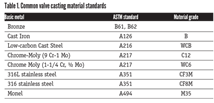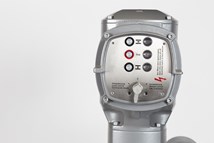Looking Toward 2019 at Power Gen and Valve World
Two recent events over the last month brought together valve manufacturers and end users, and VMA members and staff were there to learn all that’s new in the industry.
#VMAnews
Arie Bregman, vice president & general manager at DFT Inc. felt the show was well attended both with exhibitors and show attendees.
“The economic sentiment in Europe is quite different than it is in North America, or the U.S.,” he said. The U.S. economy is in many ways fueled by oil and gas. “But Europe is not a producer of energy, only a consumer, so the European countries are experiencing a much lower rate of GDP growth. As a result, my impression is that the consumption of valves into Europe will be low during the next 12 months,” predicted Bregman. “However, the engineering of projects in the Middle East and the Far East is enjoying some strength. Therefore, it will be important for valve and actuator manufacturers to stay close to the E&C companies in Europe to get a chance to participate in projects outside of the EU.”
Jeff Kane, director of sales and marketing at DFT Inc. noted many good international visitors stopped by the company’s booth. “Pretty much everybody we meet are potential representatives for distribution,” he said. “We do get to see some end users, but the majority are current representatives or potential representatives or distributors.”
Kane noted that this year, it seemed everyone at the show was excited about what had gone on in 2018 and positive about 2019.
POWER-GEN: MIXED REVIEWS
According to VMA President Bill Sandler, the 2018 version of Power-Gen International in Orlando fell somewhat short of expectations by VMA as well as some exhibiting members. The number of exhibiting companies was down and many VMA members who had previously had a strong presence at the show chose not to participate this year. Also, a number of companies reduced booth sizes.
However, while the attendance was down this year, plenty of valuable information was exchanged during the event, which had as its theme, “Where Conventional meets Renewable.” In addition to conference presentations, the new well-received Knowledge Hubs, provided educational content at various spots on the trade show floor.
The 2018 conference featured different tracks for hydro, solar, wind and microgrids in addition to the traditional tracks such as gas-fired turbines, plant optimization and energy storage.
There were also two keynote addresses by GE’s Scott Strazik and former White House economist Todd Buchholz.
“Fundamentally, renewables are growing faster,” Strazik said. “When you look at fuel dynamics there’s a lot of opportunity for natural gas.”
Strazik also noted that increased use of natural gas for power generation has made a large contribution to carbon emissions reduction. Statistics indicate that two-thirds of the 27% drop in CO2 in past years is due to the transition from coal to gas.
Keynote speaker Todd Buchholz was director of economic policy for the first Bush Administration. He said that free markets promote prosperity, but “the free market is not a pain-free market. When new companies, new products, and new trading partners come around, some people do get hurt.”
Addressing the changes in the electric grid, he pointed out that all along the grid, cities are buying power directly for their residents. “Companies like Alphabet (Google) are walking right past the utilities to buy their own electricity, and homeowners are laying solar panels to flood the grid. Not every middleman gets snipped out, of course. But in this hyper-competitive economy, the burden of proof is on the middleman to show that he or she deserves a piece of the action, a slice of the profits.”
TECHNOLOGY
, president of power and water solutions at Emerson challenged the notion of digital twinning. “To me, when people talk about a digital twin, they talk about a photo,” Yeager said. “That is something that is already out of date, out of synch. The twin is not alive.”
What is needed, he said, is something digital that has the same DNA as the plant, that utilizes collaboration and expertise both inside and outside the company. Because it is developed over time to incorporate cloud computing, interconnectivity, machine learning and artificial intelligence, it would automatically update when the real plant situation changes.
Yeager believes the industry is already working toward those goals, which permit operators to fix it before it is broken. “That’s the digital future. That’s about the future of collaboration,” he said.
Small hydro is also benefitting from technology. One example came from Glen Harrison of ABB who discussed a low-cost operations center for eight small hydroelectric plants in Ontario, Canada. All of the plants were nearing, or had passed, 100 years old. In order to reduce the ongoing cost of operations, the owner worked with ABB to consolidate operations into one primary control center that was nearly 2,000 km from the plants. Using a modern SCADA HMI package, the client is now able to centrally control all the units.
SUMMARY
These two trade shows left attendees feeling confident that 2019 will continue to bring positive changes for the valve industry. The biggest challenges will be to adapt to changes in technology and find qualified people to fill vacancies.
Kate Kunkel is senior editor of VALVE magazine.
RELATED CONTENT
-
ValvTechnologies and Severn Form Strategic Partnership
ValvTechnologies and Severn Glocon have reached a partnership agreement that will see collaboration between two of the world’s leading engineering and manufacturing companies specializing in innovative, high-end, severe-service valves.
-
Using Additive Manufacturing for Valve Repairs Across the Globe
Printing components on-site will allow for faster repairs and parts replacement for critical applications.
-
Check Valves: The Most Important Valves in Your Process System
Check valves, as critical as they are for flow system performance, often don’t receive the respect they are due, said Arie Bregman, vice president and general manager, DFT, Inc., in a recent VMA presentation.












 Unloading large gate valve.jpg;maxWidth=214)